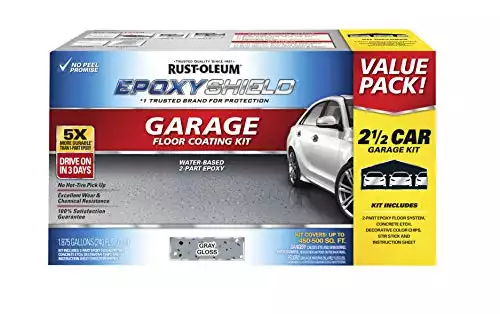If you’re looking at options for basement flooring, you might be a bit overwhelmed.
After all, there are thousands of options, ranging from cheap to astronomical.
But don’t worry—our guide breaks down the best types.
Shopping for Basement Flooring?

Alyona Tec/Shutterstock
Whether you’re redoing your home or moving into a new one, you’ll want to take advantage of your basement space.
A key factor to keep in mind is what flooring to put in the basement and what kind of basement ceiling to use.
Basements have a lot to offer, from an added layer of security in your home to a space that you may be able to rent out for some extra cash. While they can be very flexible spaces, they also have some unique factors to consider.
So today, we’re going to look at some of the best options for basement flooring that will prove to be durable and practical but will still look stylish and classic for years to come.
Consider your budget and how involved you want to be before choosing your flooring.
Paint, epoxy, or tile are great options if you’re going to keep it simple, while vinyl planks or engineered wood are recommended if you’re willing to put some extra work into your basement floors.
I used to manage investment properties, so you can bet that I’ve seen every option under the sun. And after spending hundreds of thousands of dollars replacing clients’ basement flooring,
I’ve learned a thing or to about what works and what doesn’t.
Before You Start
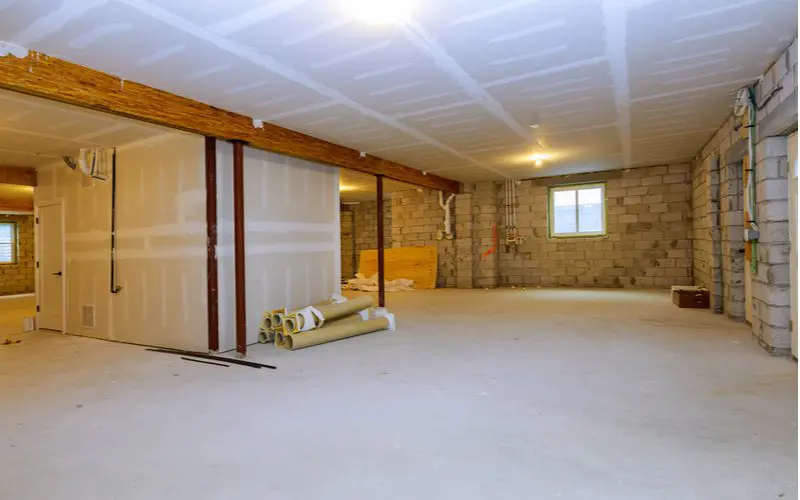
Ungvar/Shutterstock
Before you even start to pick out flooring, you’ll want to pay close attention to the concrete beneath it.
This concrete has likely been there since your home was built and if no one has paid attention to it since then, it’s going to need some repair.
Carefully look over this concrete layer before installing new flooring. Be on the lookout for rough or uneven surfaces in the concrete, cracks (ones that you can fit a dime into), and any shifting resulting.
Addressing these issues is essential before installing new flooring for several reasons.
First, basements are known for being damp and musty, and these issues can be exacerbated when the integrity of the concrete is compromised, allowing more moisture in. It can even result in excess water coming in during wet weather, leading to flooding.
Starting with a solid foundation is critical. If there are uneven surfaces in this part of your floor, it’ll show through in the new flooring.
You’ll likely have problems installing the new flooring over a rough surface, and regardless of the material used, it’ll bow and warp with time.
That’s why it’s crucial that you inspect your cement flooring for defects or, better yet, have an inspector come and make sure you’re starting on a solid foundation when you install your new basement flooring.
Important Considerations
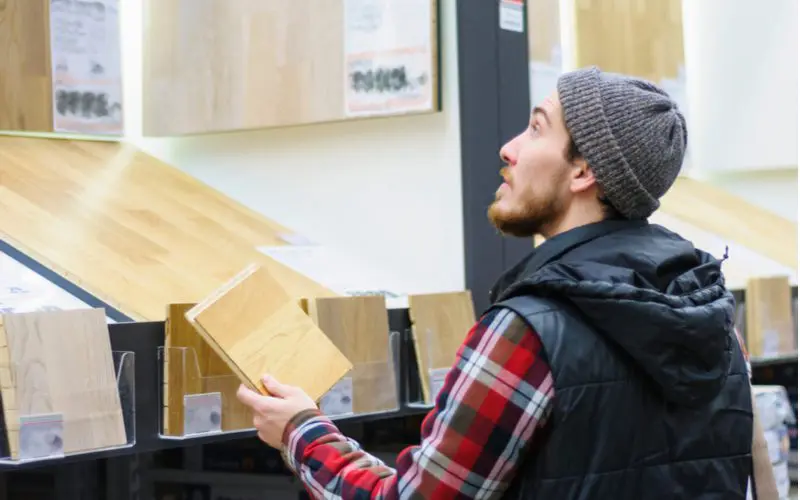
Labutin Art/Shutterstock
Because there are many flooring options for your basement, it’s important to consider the aesthetic you want for it, as this will heavily influence your final choice. Think about what the space will be used for.
Because a basement can have so many uses, you might be planning to use it as a multi-purpose area. So consider the effect you want the space to have. Do you want it to be inviting and homey, or would you prefer it to be clean, minimalistic, and bare?
There is no wrong answer, but deciding this ahead of time will help you narrow your options and pick a material that’ll suit your style and give you a usable and well-integrated space.
You’ll also want to finalize your budget before you pick a flooring style. Due to the cement, your floor will look cold and uninviting unless you install a subfloor over it. In fact, many types of flooring require you to install a subfloor.
Subfloors create a smooth and even surface and produce an inviting effect, similar to main-level floors. It’s important to remember that installing a subfloor will take away from your budget, leaving less left over for your flooring materials.
Best Types of Basement Flooring
Whether you decide to install subflooring to encourage a warm atmosphere or prefer to use your basement area as a workshop, there are plenty of flooring options that will cater to a basement environment and help you make the most of the space.
1. Options That Don’t Need a Subfloor
If you don’t want to install a subfloor, there are several budget-friendly options.
You or a professional can install these basic options quickly and easily, leaving you with a no-hassle, fuss-free basement floor.
Paint
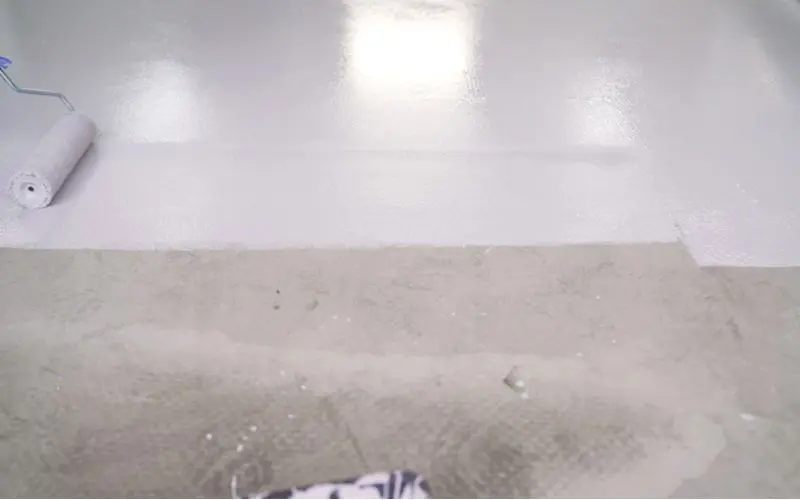
Sidorov_ruslan/Shutterstock
Paint is among the easiest and most basic basement flooring options.
Although it’ll leave a colder finish, it’s still a great and budget-friendly option for adding some style and personality to your basement.
If you plan to use your basement as a workout area or storage space, then a painted floor will cover all your bases and needs.
Choose paint specially made for cement flooring and brush up on the proper technique for surface preparation, application, and curing.
The process is simple enough for a weekend DIY project, and costs are as low, at about $10 per square foot.
Epoxy
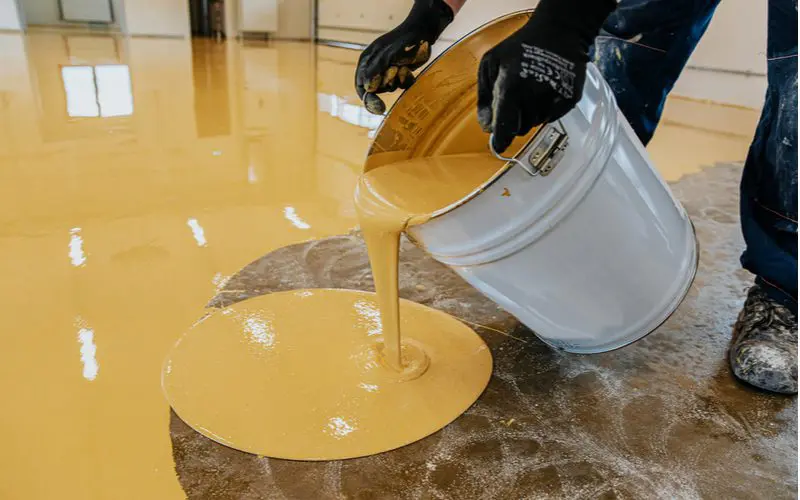
Doralin Samuel Tunas/Shutterstock
If you still want a basic solution for your basement floor but something with a little more finish than paint, then epoxy is a great alternative.
These are frequently used in garages and workshops and give a smooth, waxed sort of look in the final product.
There are many options for different styles of epoxy; you can get it in different colors, and elements can be added in for texture at the end of the process.
Either way, epoxy is easy to keep clean and tidy and is still budget-friendly, at around $120 for a DIY kit.
2. Options That Work With or Without a Subfloor
If you’re on the fence about installing subflooring but want to move ahead with your project, then don’t fret.
Several flooring options can be used with or without subflooring, although each installation method will have its pros and cons.
Tile
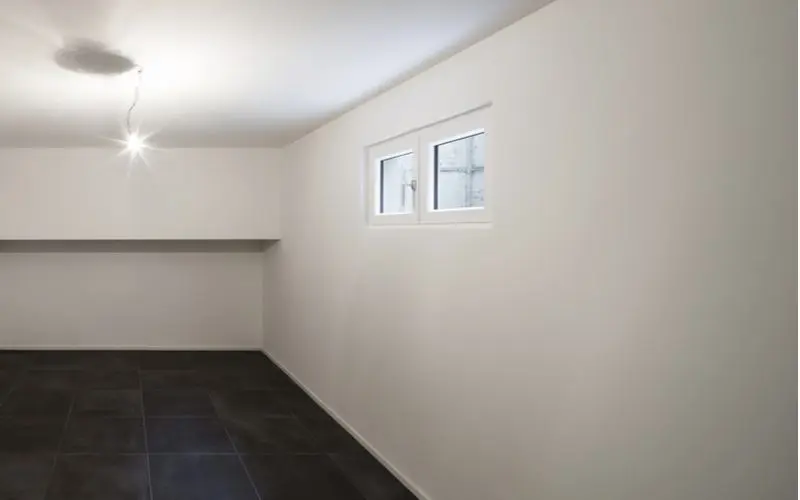
Alexandre Zveiger/Shutterstock
The world of tile is pretty extensive; thankfully, several types can be used in your basement for flooring, either with or without subflooring.
The appeal of tile is that it’s easy to install since it can be laid down in individual pieces. This makes it equally easy to fix if only a single tile needs repair.
Rubber, vinyl, or ceramic tile can be used, but rubber and vinyl are the best choices for basements without subflooring. Their flexible surface can cut down on the hardness of the concrete beneath and can be a forgiving material for any surface irregularities.
When it comes to the different types of tile, prices range heavily. Rubber and vinyl tiling can be anywhere between $2 and $8 per square foot.
There’s almost an endless variety when it comes to tile. Some styles look like wood or stone, and they come in just about any color or pattern imaginable.
It’s also straightforward to install, as most of them come with interlocking joints, so you can also save time and money by laying the flooring yourself.
Another plus of this style of flooring is that it’s waterproof, stain-resistant, and highly durable. Tile is a very popular choice for basements.
Sheet Flooring
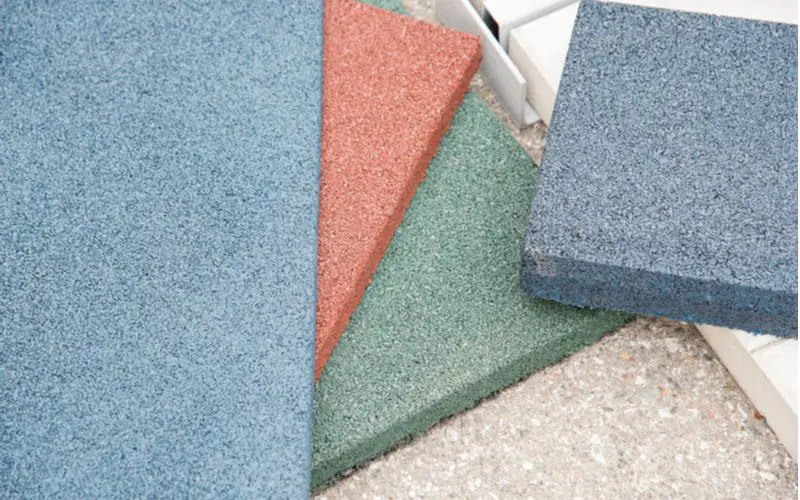
Oksana Volina/Shutterstock
Sheet flooring comes in almost all the same materials, designs, and textures as tiling.
The difference is that, as the name suggests, the material will come in a sheet to be rolled out upon installation instead of being made up of individual squares that need to be interlocked.
There are several pros and cons to sheet flooring. It’s slightly cheaper than tiling ($.75–$5), but the installation isn’t as easy.
The material comes in a large roll that needs to be positioned and cut correctly. Often, professional installation yields a better result, which can negate the savings.
Additionally, this flooring shows imperfections beneath much more clearly than tile. If you’re set on sheet flooring, installing over a subfloor will lengthen your floor’s life.
3. Options That Need a Subfloor
Installing subflooring opens up a wider world of flooring options for your basement.
If you’re determined to use tile, installing subflooring first will make your flooring investment last longer and feel warmer underfoot.
Vinyl Planks
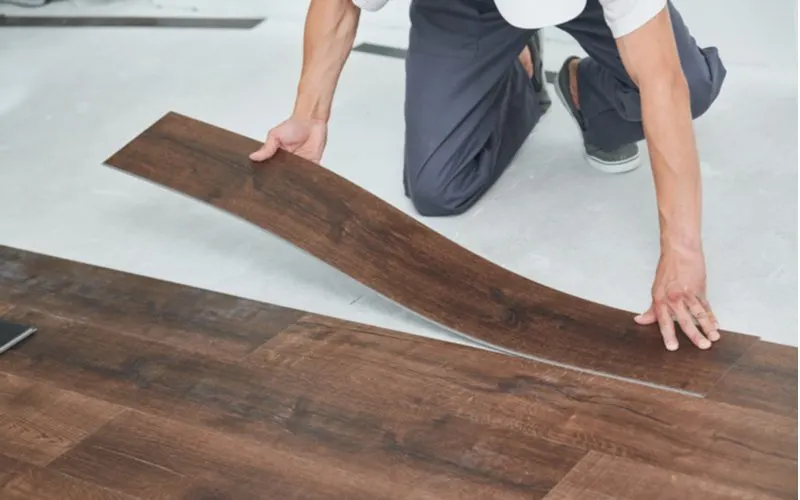
Dmitry Kalinovsky/Shutterstock
Vinyl planks are a very popular and versatile style of flooring for basement use. Some of the most-used options are stamped with texture, color, and patterns that replicate the look of wood flooring.
This is a highly affordable and practical way to get the look of warm, natural wood flooring in a basement environment that typically isn’t very conducive to real wood.
This style of flooring comes in planks and sheets, with planks yet again being easier to install and replace if needed.
However, if you’re installing a subfloor and hiring a contractor or builder to do so, then it might be worth it to have a professional install your flooring as well if you decide to go with vinyl. The cost is reasonable, at around $2 to $7 per square foot.
Engineered Wood
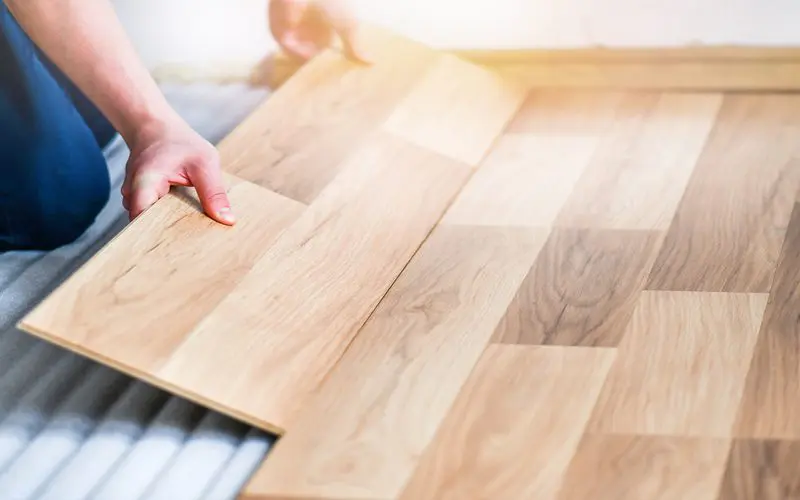
Krasula/Shutterstock
The dampness and potential flooding capability of basements make them unsuitable for using natural hardwood for flooring.
However, the aesthetic of hardwood floors is still achievable if you want a warm, inviting feel to compliment a family space.
Engineered wood combines a thin layer of real wood with a more sturdy and durable bottom layer, pairing the best of both worlds. It looks and feels like real wood flooring, with a composition similar to plywood, except it’s around .5 inches thick or less.
The pricing for this style of flooring is also pretty reasonable, at around $4–$7 per square foot.
It still has the durability and ease of installation as many of the styles we’ve mentioned already: many types come in interlocking planks that make it easy to lay down one piece at a time and likewise to replace one part if needed.
Frequently Asked Questions
What flooring is waterproof for basements?
Epoxy paint and sealed concrete are the two best options for waterproof flooring for basements. They’re also durable and affordable.
Can I just paint my concrete floor basement?
Yes, painting your concrete floor is an option and can look great in your basement. Be aware, however, that ordinary paint will come off in a matter of months, so concrete paint is recommended.
What is the least expensive type of flooring?
Sheet vinyl is the cheapest flooring on the market in general.
Keep in mind, however, that it can be challenging to install and may require a professional. Laminate and vinyl plank flooring are the next cheapest options.
Which Basement Flooring Will You Choose?
When it comes to choosing the floor for your basement area, the sky is the limit!
Depending on what you want to use your space for, there are options that span any budget and involvement level.
Whether you want to install subflooring or not, there are plenty of flooring options that can both fit your budget and make your basement a comfortable, clean, and enjoyable space, meaning that it won’t go to waste in your home.


